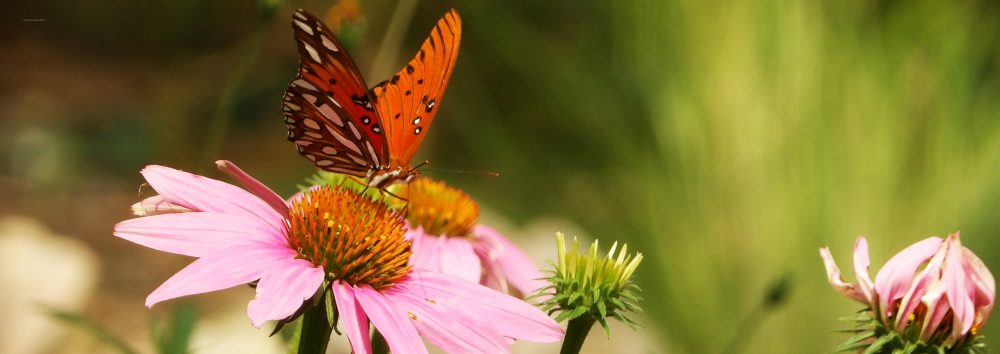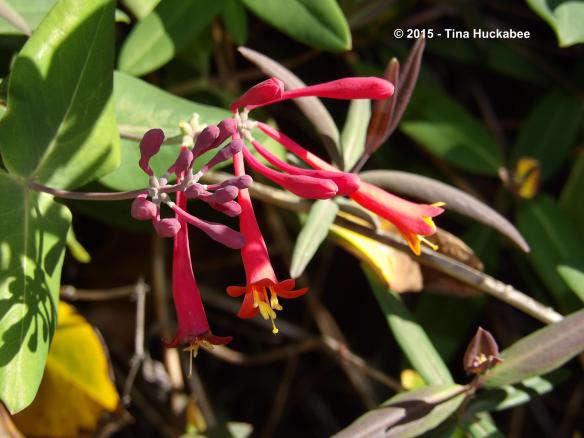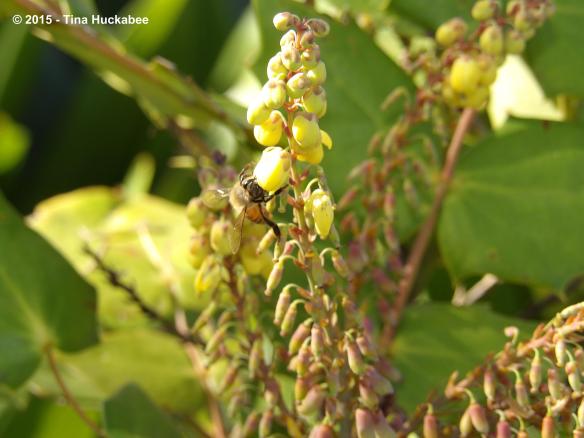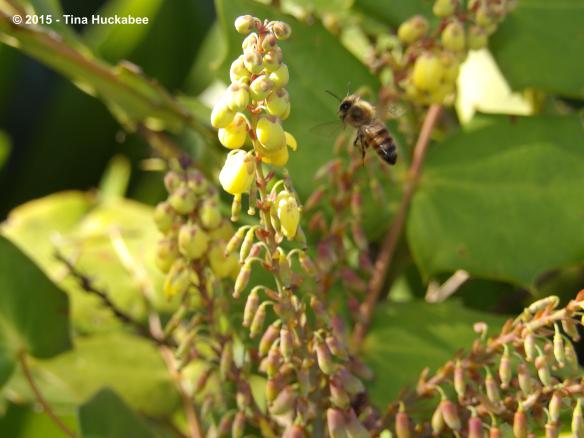Are you interested in a long-blooming, tough-as-nails perennial that can withstand heat and drought, freeze and flood? Look no further than this gardener’s favorite, Purple Coneflower, Echinacea purpurea.
Glorious in its spring beauty, this wide-spread North American native is a must-have for any garden. Here in Central Texas, the aster family flowers bloom during spring and summer, resting in the July and August dormant-hot season.
Though not quite as spectacular as in the spring show, there is usually a second flush of blooms during the autumn months. In mild winters, Coneflowers bloom sporadically; a hard freeze nips the flowers and sends the plant into dormancy.
Individual plants form rosettes from seed, and those rosettes grow larger with maturity.
During winter, the rosettes are evergreen, or mostly so. I like to plant in groups of three to seven, but I’m happy to let volunteers seed out where they may. If I don’t like where a plant grows, I transplant it or pass it along to another gardener.
In my urban Austin garden, the foliage remains mostly evergreen through winter. Sometimes after a particularly hard freeze, exposed greenery suffers and the whole foliage rosette dies to the ground;; they typically emerge in early spring, ready for a long blooming season. Since Purple Coneflowers range from Texas through the mid-Atlantic states and even a bit north and westward, the timing and severity of freezes and the flush of blooming varies from what Coneflowers experience here in Austin.
As spring approaches, new foliage emerges and the rosettes thicken.
In time, a bloom stalk shoots forward from the rosette, followed by others.
It always seems to take weeks for those first blooms to appear, but appear they do!
By mid-to-late April (in Central Texas) the Purple Coneflower is in its prime blooming season.
New bloom stalks adorned with accompanying flowers continue to grow into early June. Purple Coneflower plants, en masse, provide quite a show.
A favorite of all kinds of bees and butterflies.
Purple Coneflower is an excellent pollinator plant. Sometimes, even the “bad” bugs will hop on for a ride,
…but only rarely is there any damage to the flower, like this Cone with its neatly trimmed petals. Only a few of my Coneflowers have ever been damaged by insects. It’s a tough, happy flower. Remember that it’s just fine and dandy to have a few holes in your leaves or petals; it means that you’re lovely plants are feeding some sort of wildlife and that’s the way it’s supposed to be.
One of the things I like most about the Purple Coneflower is that the individual blooms last a long time. These are attractive garden plants for months and they complement other shrubs and perennials, in color and form. They also make great cut flowers for arrangements, if you’re so inclined.
I’ve noticed that there’s often a subtle color difference in each of the individual flowers, even when sharing the same rosette; some are lighter, some are darker. Coneflowers morph into a paler color as they age.
As well, some are typical daisy-ray flowers,
…and some sport petals that droop down like a botanical hula-dancer.
As the summer months progress and Texas heat and dry weather pattern persists, Coneflowers’ color fades, the flowers coarsen, turn brown, and become “crispy”.
Crispy critters.
Truthfully, I rather like the “dried” form of the Coneflower–to a point. By mid-to-late July, I begin pruning the flower stalks down to the rosette. I usually take my pruning cue when a couple of events come into play: bloom stalks have flopped to the ground; bloom stalks have developed a slight case of mildew and the foliage is wilting and unattractive; resident and visiting finches have plenty of other seed sources from which to feed on.
Not only are Purple Coneflowers great for pollinators during bloom time, but the little seed eating birds find them yummy too. I usually keep some of the “crispy” Cones around into autumn, just because I like the look of the dried flowers in the garden and to feed my feathered friends. Originally, I kept the spent blooms so that seeds would develop and I’d have more Coneflowers for my gardens. Trust me when I say, at this point in my life, I have plenty of Coneflowers!!
Once I trim off the spring growth and September rolls around with its shorter days, cooler nights and promises of more of the same, the Purple Coneflowers enjoy a second blooming cycle. The flower stalks don’t grow as tall, nor do all of the individual rosettes bloom up, but enough of them do, providing for pollinators and birds, and thrilling this gardener again with their perkiness. The second blooming period ends with the first hard freeze.
Purple Coneflower plants are tolerant of a wide variety of soil types, but prefer good draining soil. My urban garden has a clayey soil type and the Cones have always thrived. Like most prairie plants, Coneflowers like full sun, but they will bloom in shade, too. I’ve noticed that the shade Coneflowers sport a paler petal color than their more flamboyant, full sun purple/pink kin. My gardens are part shade/part sun and I have Coneflowers in every garden bed–they all perform well, though the full sun exposed Cones bloom best, brightest, and longest.
My Purple Coneflowers hail from a $2 packet of seeds from the Lady Bird Johnson Wildflower Center, purchased over twenty years ago. These perennials grow well from seed, but four-inch or gallon containers are available, especially in spring, and at knowledgeable local nurseries. Unfortunately, Purple Coneflowers are not deer resistant, so pop them in where the deer can’t nibble them down.
In 2008, I removed the last grass area in my backyard and developed a large, perennial garden in its stead. I planted with seedlings of perennials, including Purple Coneflowers, that had germinated in other parts of my gardens. In the new garden, I’d planted a few large, back border shrubs and small trees, but I wanted the bulk of the garden to consist of Purple Coneflowers, along with a few companion perennials. Prior to planting, I wondered if it was possible to have too many Coneflowers. I discovered that it is indeed possible to have too much of a good thing. While the new garden was stunning during its first Coneflower Palooza spring, once the summer Coneflower crisp set in and I pruned them to the ground, the garden was a bit boring. I’ve since removed some of the Coneflowers and added other companion plants which bloom at different times of the year. It was a good lesson: the well-planned mixed perennial garden is just that–mixed.
Purple Coneflowers are magnificent in drifts during spring and summer, but they’re best planted for seasonal interest with compatible late summer and autumn flowering, and winter berrying, perennials and shrubs.
Because they’re an excellent wildlife perennial, a hardy Texas (and other places) native, and a pretty, pretty flower, you should plant Purple Coneflowers in your gardens.
Spring
Summer
Fall
Winter
























































































